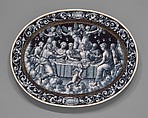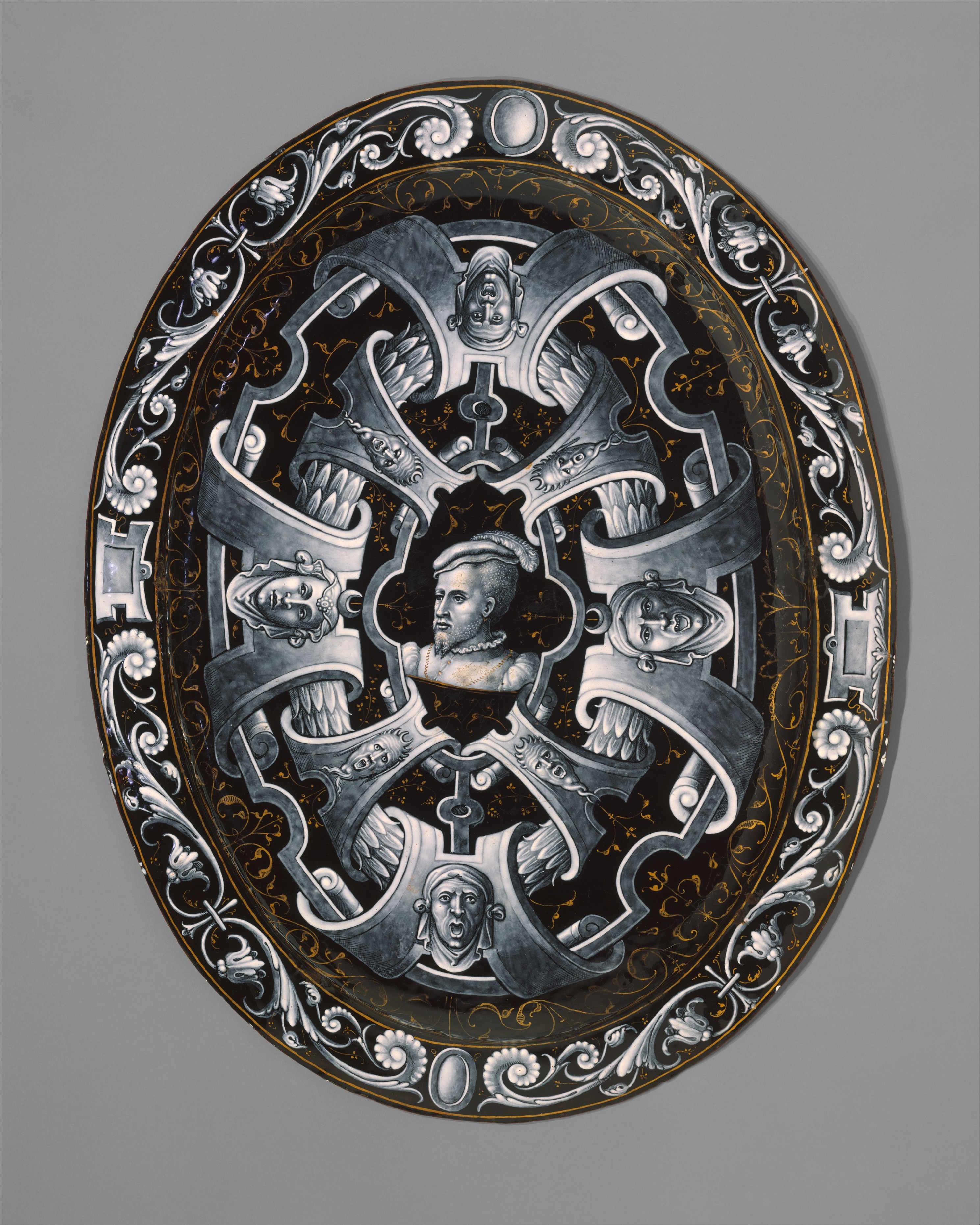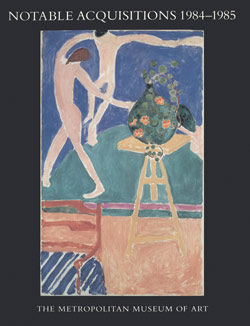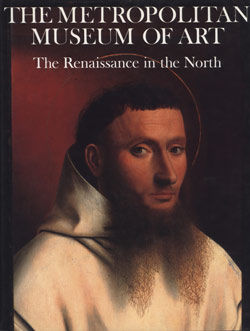The Wedding Feast of Cupid and Psyche
Enameling is a technique whereby a vitreous substance, often containing pigment, is fused with metal to produce a glossy surface. Limoges became a center for enameling as early as the twelfth century, when the art flourished in monastic workshops. In the late fifteenth century, this city in central France emerged as a center of secular as well as ecclesiastical enamelwork, and the school flourished throughout the sixteenth century. Among the most famous and prolific of the enamel painters practicing in sixteenth-century Limoges was Pierre Reymond (1513–after 1584), the author of this dish. Reymond's mastery of his medium is evident in the rich tonal range, the accurate modeling of his figures, and the sense of life and action. The restricted palette, in which white, black, and red are combined into rich, varied gray tones—hence the name grisaille painting—is enlivened by the decorative use of gold. The lip of the dish is remarkable for its rich vegetal decoration from which varied figures emerge. Reflecting Reymond's pride as an artist, the dish prominently displays his initials and the date 1558. Renaissance humanists interpreted the wedding of Cupid and Psyche, a subject drawn from The Golden Ass by Lucius Apuleius (born ca. 124 A.D.), as the union of desire and soul.
Due to rights restrictions, this image cannot be enlarged, viewed at full screen, or downloaded.
This artwork is meant to be viewed from right to left. Scroll left to view more.





